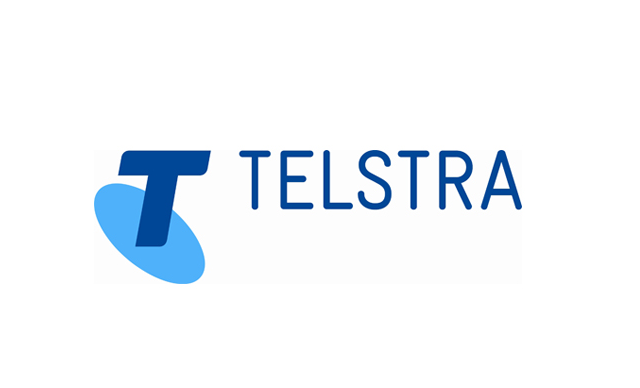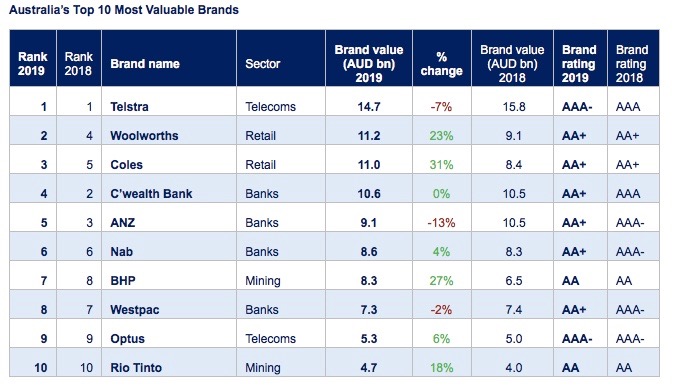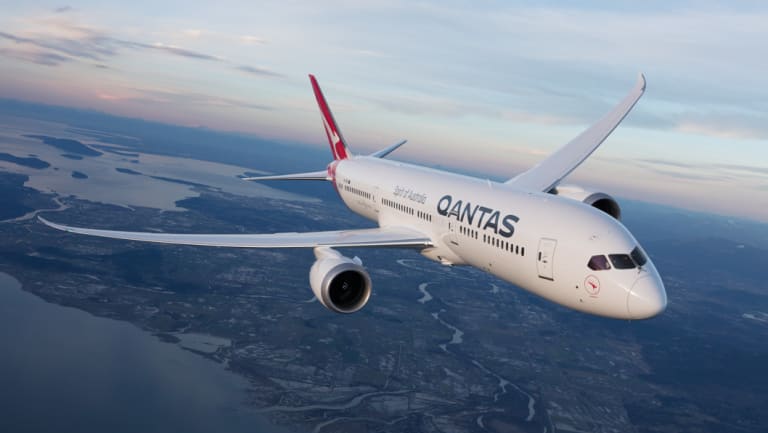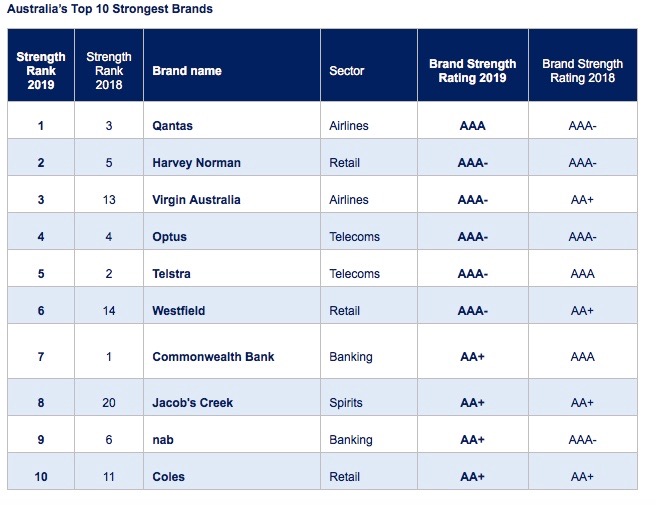Brand Finance report: Telstra remains Australia’s most valuable brand despite dropping 7%
 Telstra remains Australia’s most valuable brand despite its brand value subsiding 7% to $14.7 billion, according to the latest report by Brand Finance, the world’s leading independent brand valuation and strategy consultancy. Woolworths (brand value up 23% to $11.2 billion) and Coles (brand value up 31% to $11.0 billion) both jumped two places to 2nd and 3rd, respectively. The two Australian retail giants have grown their brand values strongly this year despite the threat of online competition from Amazon.
Telstra remains Australia’s most valuable brand despite its brand value subsiding 7% to $14.7 billion, according to the latest report by Brand Finance, the world’s leading independent brand valuation and strategy consultancy. Woolworths (brand value up 23% to $11.2 billion) and Coles (brand value up 31% to $11.0 billion) both jumped two places to 2nd and 3rd, respectively. The two Australian retail giants have grown their brand values strongly this year despite the threat of online competition from Amazon.
Telstra’s fall in brand value was primarily driven by a decrease in brand strength as the telco giant continues to face many challenger brands in its key service areas of mobile, internet and landline telecommunications. Despite this fall in brand strength, it remains Australia’s 5th strongest brand, and clearly continues as Australia’s dominant telecommunications carrier. On the other hand, Optus (brand value up 6% to $5.3 billion) increased its brand strength this year, overtaking Telstra to become the country’s strongest telecommunications brand, and Australia’s 4th strongest brand overall.
Elsewhere, mining giant BHP (brand value up 27% to $8.3 billion) continues to derive strong results from their major 2017 re-branding exercise, remaining Australia’s most valuable business-to-business brand. BHP’s corporate leadership has invested significant effort in charting out a forward-looking brand vision based around growth and security, despite the risk of global financial challenges.
Says Mark Crowe, managing director of Brand Finance Australia: “Telstra remains Australia’s most valuable brand, with its key customer segments delivering high quality and reliable operations right across its entire portfolio of telecommunications services. However, the brand continues to face domestic challenges from a variety of competitors in its core services, putting downward pressure on its overall brand value. Looking ahead, management will need to ensure that they are able to leverage Telstra’s existing brand strength to ensure that the brand does not merely become a dumb pipe to carry smart services: this offers Telstra the opportunity to grow commercial revenue by extracting greater value from online supply chains.”

Retail brands enjoy strong growth in face of online competition
Near the top of the ranking, Woolworths and Coles both achieved steady brand value growth. Across the board, the brand value of other retailers also grew strongly, with Bunnings (up 33% to $2.0 billion), Westfield (up 30% to $2.0 billion), Kmart (up 35% to $1.5 billion) JB Hi-Fi (up 14% to $1.4 billion) and Harvey Norman (up 34% to $1.2 billion) all recording solid results. Despite significant fears a year ago, the arrival of Amazon into the broader Australian retail market has not yet harmed the value of Australian retail brands.
Says Crowe: “Woolworth’s revival has continued, moving up two places to become Australia’s second most valuable brand. Strong customer metrics and improved brand investment have seen Woolworths remain ahead of Coles, which has also moved up two places to claim the third rank following an increase in brand value of 31%.
If current growth trends were to continue, Woolworths will again challenge Telstra for the most valuable Australian brand in coming years.”
Banks tarnished by government pressures
Commonwealth Bank (brand value marginally up to $10.6 billion) remains Australia’s most valuable banking brand, ahead of the other big banks, with ANZ (brand value down 13% to $9.1 billion), nab (brand value up 4% to $8.6 billion) and Westpac (brand value down 2% to $7.3 billion) enduring mixed years.
Says Crowe: “Australian banks’ brand value and brand strength have suffered in the aftermath of the Financial Services Royal Commission. While the banks’ underlying financial performance is sound, the adverse impact on brand equity will require significant brand investment to mitigate against erosion of brand revenues over the next 12 to 18 months.”
 Qantas soars to become Australia’s strongest brand
Qantas soars to become Australia’s strongest brand
In addition to measuring overall brand value, Brand Finance also evaluates the relative strength of brands, based on factors such as marketing investment, familiarity, loyalty, staff satisfaction, and corporate reputation. Alongside revenue forecasts, the brand strength index (BSI) is a crucial driver of brand value.
According to these criteria, Qantas (brand value up 45% to $3.8 billion) improved its BSI to 86.6, achieving a brand rating upgrade from AAA- to AAA to become Australia’s strongest brand. Meanwhile, last year’s strongest brand, Commonwealth Bank, fell to seventh, with its brand rating shifting from AAA to AA+. This reflects the high-regard that Australians have for the Qantas brand as it continues to lead the Australian aviation industry, on both domestic and international routes.
Says Crowe: “Qantas’ brand performance is quite exceptional given that enterprise value has decreased by 8%. This result highlights the importance of the iconic brand to the company as it deals with increasing competition on its domestic and international routes. Brands in the airline sector have been to the fore in Australian aviation with both Jetstar (28%) and Virgin Australia (16%) also recording strong increases in value.”


2 Comments
If Telstra is Australia’s most valuable brand we should all pack up and go home. Deregulated quasi-monopoly anachronism. And shit work.
Not just Telstra.. Woolworths, Qantas etc..
No competition and an apathetic consumer = brand dominance.
With enough money, anyone can create a ‘valuable brand’ even if the product is terrible. Which most of those in the top 10 are, poor quality products with mediocre advertising on mass scale.
Byron was right in Australia at least.